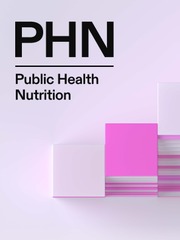No CrossRef data available.
Article contents
Food and drink advertising along school children’s transport routes in Victoria, Australia and policy implications
Published online by Cambridge University Press: 10 April 2025
Abstract
Examine the extent and nature of food and non-alcoholic drink advertising displayed on public transport and infrastructure on school routes.
Audit of outdoor advertisements on government-controlled public transport and associated infrastructure (e.g., tram shelters, bus stops) on busy school routes in Victoria, Australia. Using a strict protocol, trained field workers collected data on the type and content of outdoor advertising during February 2023 (start of school year). Food/drink advertising was classified (unhealthy or healthy) according to the Council of Australian Governments Health Council National interim guide to reduce children’s exposure to unhealthy food and drink promotion (2018).
Government-controlled buses, trams and public transport infrastructure on routes from eleven of the busiest train stations in metropolitan Melbourne and regional Victoria, Australia to 50 public primary and secondary. Stations were chosen based on annual patronage, area-based socioeconomic status (SEA) and regionality)
156 out of 888 advertisements were for food and non-alcoholic drinks. Of these, almost six in ten (58%) were deemed unhealthy irrespective of SEA or regionality. Marketing appeals most featured were taste (31%), convenience (28%) and emotion (9%). A significantly higher proportion of unhealthy advertisements were displayed within 500m of schools versus outside this radius (91% vs 57%, p<0.01).
Given detrimental impacts of exposure to unhealthy food/drink advertising on children’s diets, the pervasive, powerful presence of such advertising across government public transport assets, particularly around schools, contradicts public health recommendations to protect children from exposure to and influence by this harmful marketing and warrants government action.
- Type
- Short Communication
- Information
- Creative Commons
- This is an Open Access article, distributed under the terms of the Creative Commons Attribution licence (http://creativecommons.org/licenses/by/4.0/), which permits unrestricted re-use, distribution and reproduction, provided the original article is properly cited.
- Copyright
- © The Author(s), 2025. Published by Cambridge University Press on behalf of The Nutrition Society


